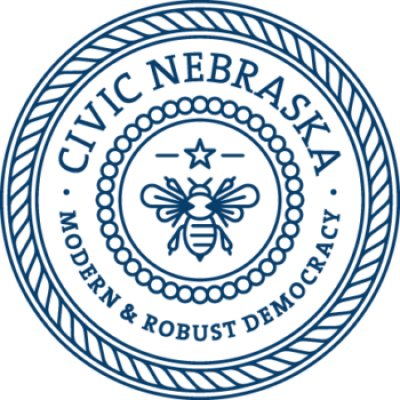Civic nebraska celebrates
It starts on our streets, in our schools, and in our neighborhoods.
That is where you will find Civic Nebraska.
We’ve been in a festive mood at Civic Nebraska as we celebrate our tenth year of ensuring a healthy democracy in our state. In the past decade, our organization, mission and impact has grown – a testament to our progress and, most notably, to our committed supporters. As we’ve matured, we’ve kept our original vision close to our hearts: Building a community of Nebraskans of all ages and backgrounds who take action in our democracy in innovative, substantive ways.
We’ve seen any number of amazing things in our first decade, far too many to share in a humble blog post. So in honor of our tenth year of service, we decided to look at few choice facts about Civic Nebraska – by the numbers.
10
This one’s easy. The years Civic Nebraska has worked to ensure modern and accessible elections, to build engaged, service-minded youths, and to strengthen the civic health of the state. From its humble origins – it was born in a University of Nebraska-Lincoln residence hall after a group of undergraduates across the political spectrum came together to form Nebraskans for Civic Reform – to its expanding efforts today in our schools and neighborhoods, Civic Nebraska has always been a voice for civic engagement, civil discourse and participatory democracy.
9
The number of educational sessions at Capitol Experience Days, one of Civic Nebraska’s signature programs. Designed for middle- and high-school students, Capitol Experience Days get beyond simple tours of the Nebraska State Capitol and into what happens inside the walls of the statehouse. Interactive sessions teach critical thinking, civil discourse, and the governing process through exposure to state legislators, executive branch officials, and Supreme Court justices. Students also get first-hand experience in lawmaking as they engage in mock committee hearings, consider current legislation from different viewpoints, and research bills as senators, supporters or opponents. Learn more about how your school can schedule and take part in a Capitol Experience Day.
8
The number of weeks typically reserved for CIRCLES, Civic Nebraska’s Girl Empowerment and Career Pathway Project, to connect underprivileged middle-school girls with highly successful women in their communities. These mentors meet with girls, coach them, share career experiences including how to overcome difficulty, and help instill them with the confidence to dream big. The program can be organized to last as few as eight weeks, or it can span an entire school year if necessary.
7
Types of projects in ONE Omaha’s Neighborhood Project Toolkit, a free resource with practical advice on community-strengthening activities from neighborhood cleanups to block parties. Civic Nebraska is fiscal agent for and close partner with ONE Omaha, a public-private initiative launched in 2015 seeking to develop Omaha’s neighborhoods and promote democracy at the neighborhood level.
6
The number of Lincoln neighborhoods upon which Collective Impact Lincoln closely focuses. Those areas – Belmont, Clinton, Everett, Hartley, Near South and University Place – are neighborhoods within the city with the highest rates of poverty, but also the most potential to grow. Collective Impact Lincoln, which is a partnership among Civic Nebraska, Nebraska Appleseed and the South of Downtown Community Development Organization, also works on policy advocacy to help all Lincolnites combat poverty, regardless of where they live. By connecting with neighborhood residents and learning about the issues that matter most to them, Collective Impact Lincoln can help build communities and identify opportunities for action. Do you live in one of these neighborhoods? Come to our monthly Community Builder Workshops at Dawes Middle School.
5
Schools in Nebraska with after-school programs run entirely by Civic Nebraska’s Youth Civic Leadership Program. Each school – Lothrop Magnet Elementary, Sherman Elementary and Lewis & Clark Middle School in Omaha, and Dawes Middle School and Campbell Elementary in Lincoln – experiences youth-driven service learning integrated into science, technology, engineering and math, the arts, and other areas. The programs also instill civic leadership, and build critical thinking, civil discourse and problem-solving skills. Civic Nebraska also reaches hundreds more students each year with our various K-12 civic leadership and civil discourse programs across the state.
4
Partners, including Civic Nebraska, who form the Rural Civic Action Project. Along with the Agriculture Leadership, Education and Communication department at the University of Nebraska-Lincoln and the Rural Futures Institute, we are taking our youth engagement efforts into rural communities. The Rural Civic Action Program is designed to engage rural high school students in critical thinking about community strengths and areas of improvement, and then take action through a service learning project to address community needs. Undergraduates in a course on leadership and service learning at Nebraska U. are peer mentors for high schoolers, while Civic Nebraska connects the university undergraduates to our network of rural-area teachers to ensure that their projects meet service-learning and state education standards.
3
Prongs in Civic Nebraska’s mission to build a stronger democracy in our state: Youth Civic Leadership, Civic Health, and Voting Rights. Together, they form the bedrock of our work: While each area focuses on specific audience and outcome, together they form a foundation for civic engagement, community service and active, lifelong participation in our democracy.
2
Main areas of focus in the Voting Rights Program. The areas – advocacy and policy, and voter-focused activities – are focused upon better serving all Nebraskans. Our advocacy and policy program strives to remove barriers to voting, while our voter-focused activities engage low-propensity and newly registered voters to create a lifelong culture of civic engagement.
1
One mission: To create a more modern and robust democracy for all Nebraskans. It takes hard work, persistence and dedicated community leaders. And we couldn’t do it without your generous support. Join us, so that Nebraskans can enjoy the benefits of a healthy, modern democracy for generations to come.




